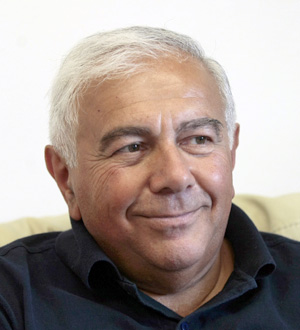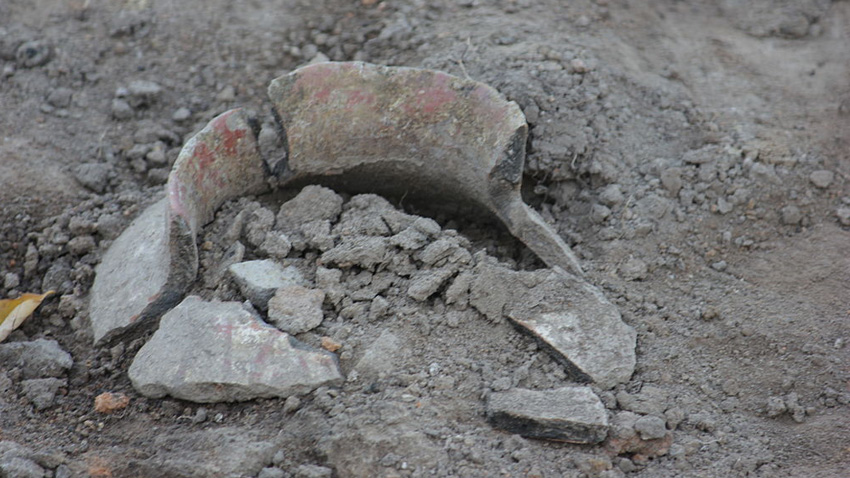In 1985 archaeologist Vasil Nikolov started the research of the Neolithic settlement in Sofia’s Slatina neighborhood due to an ancient settlement’s cultural layer having been damaged because of tramway railway repair works. On the third day he came upon the remains of a vast house that he studied through the season. “It turned out to be the biggest house in Europe for the 4th millennium BC. With the very start of the research it became clear that the early Neolithic settlement in Slatina was very interesting,” Prof. Nikolov says today. He has worked there through this season too. According to him, part of the earliest European civilization developed in that region with the arrival of population from Southwest Asia – farmers and stock breeders. The reasons for their moving most likely included unfavorable climate changes in the end of the 7th and the beginning of the 6th millennium BC.
 “Chased by those changes, they took off across the Aegean Sea towards the Balkans and the valleys of the Struma, Mesta and Vardar rivers,” the archaeologist says. “Thus they penetrated the Central, East Balkans and Northern Greece. Then a culture was developed here in the 6th – 5th millennium BC, said to be the first European civilization.”
“Chased by those changes, they took off across the Aegean Sea towards the Balkans and the valleys of the Struma, Mesta and Vardar rivers,” the archaeologist says. “Thus they penetrated the Central, East Balkans and Northern Greece. Then a culture was developed here in the 6th – 5th millennium BC, said to be the first European civilization.”
So, very interesting centers emerged across today’s Bulgaria, especially through theStone-Copper Age. For instance, Provadia – the eldest salt extracting spot in the area of the Varna Lakes. The famous Chalcolithic necropolis with the oldest technologically processed gold in the world can be seen in the region. It also reveals a well-developed social organization, an hierarchy of that type, seen for the first time in Europe, Prof. Nikolov says and adds on the artifacts discovered in Slatina:
“The people were farmers and cattlemen, but what amazed us in comparison with other settlements from that period was the well-developed architecture. It was really astonishing back in 1985 when I discovered that building on an area of 117 m2. Experts were really surprised and it has been taught in pre-history classes across many European countries and not only. However, this year we discovered two larger buildings. One of them is fully researched now and it has an area of 140 m2. The other one is even bigger, at least 160 m2, but small parts of it still remain unstudied. Over 8,000 years ago those people had incredible building skills – wooden pillars, clay solutions, very complicated roofs of two slides etc. One of the houses had three equally large rooms with a vault fireplace each and a separate site for cooking food, a stone mill and numerous granaries. One of the buildings surveyed had premises full of charred grain – the result of the fire that burnt down the house.”

All the three houses have been burnt into a deliberate fire, according to experts, perhaps due to social or religious-mythological reasons.
According to Prof. Nikolov an eventual joint project of the Sofia Municipality and the Bulgarian Academy of Sciences (BAS) could result in the building of a pre-historic park. The 1985 house could be restored in its original size. “I want it restored according to the full information gathered, no fictions allowed. I want kids to come here, to see the pre-historic house and other buildings in their original outlook – they can enter inside and see a beehive oven, stone mill, grain warehouses. They will be able to hold stone instruments in their hands. They can see that the Bulgarian lands were in the center of the European civilization…”
English version: Zhivko Stanchev
Photos: Wikipedia
The Boyana Church will be an attractive center for the delegates of the 47th session of the UNESCO World Heritage Committee , who will gather in Sofia in July this year. The Church of St. Nicholas and St. Panteleimon is one of the..
The Nikola Vaptsarov Naval Academy in Varna has marked 144 years since its founding. A period in which the educational institution has followed the trends for highly specialized training of specialists in various professional fields..
Quiet among the Lyulin Mountain slopes, the Klisura Monastery of St. Petka is marked by mystery and radiates spirituality. It is located only 7 km from the resort town of Bankya, near the village of Klisura. Winter is the time when the holy monastery..
Meatfare Sunday in 2025 will be remembered as a major celebration for the Bulgarian Orthodox Church and the entire Bulgarian community in the United..
After nearly 35 years, the Bulgarian Orthodox Church Community in London has its own church in the central part of the British capital, in close proximity..

+359 2 9336 661
